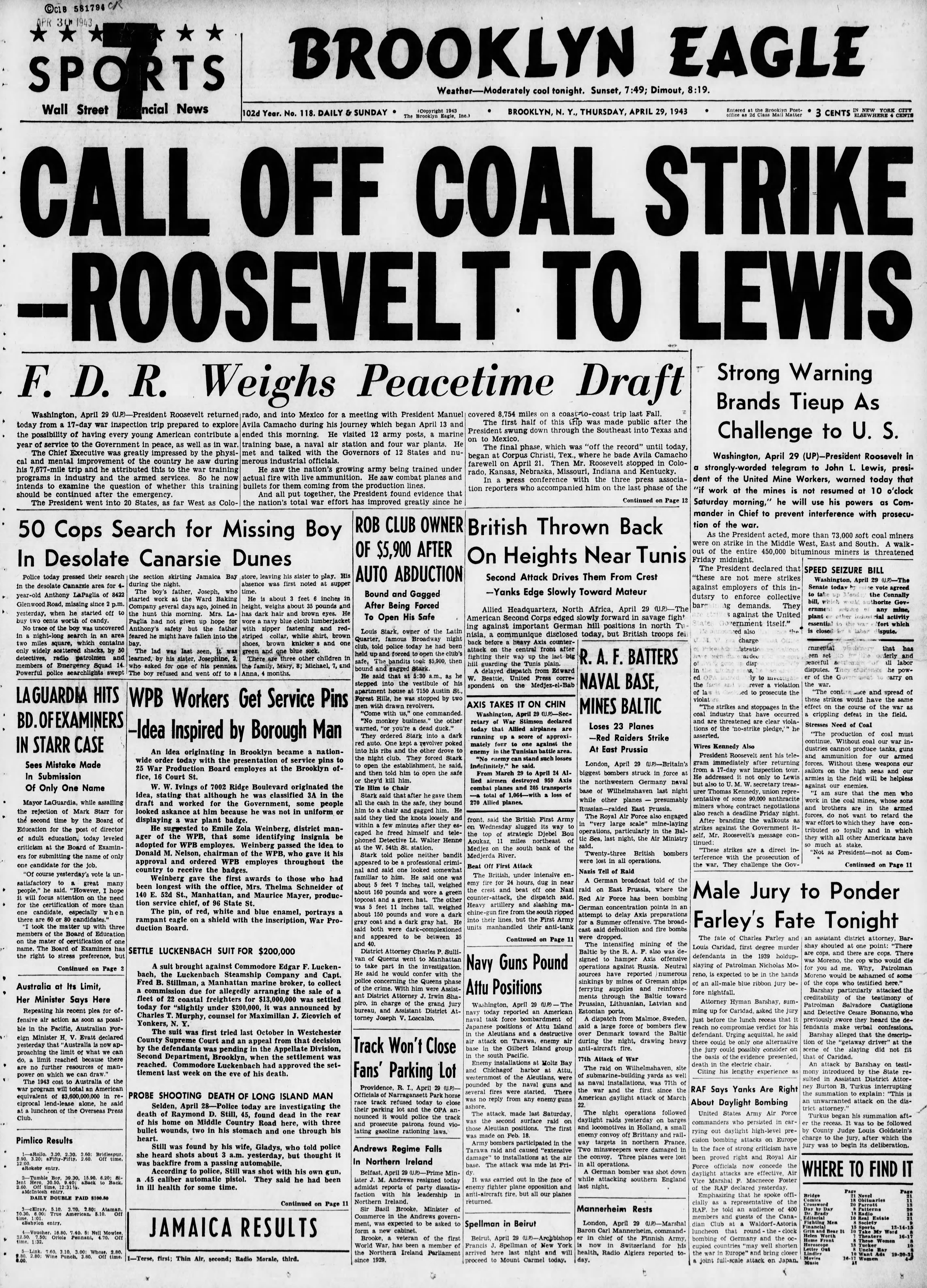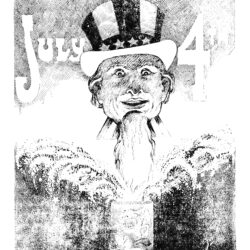
April 29: ON THIS DAY in 1943, Roosevelt tells Lewis to call off coal strike

ON THIS DAY IN 1852, the Brooklyn Daily Eagle reported, “Passengers can now leave New York in the Hudson river railroad, at 6 o’clock in the morning, and reach Buffalo, on the same day, at twelve o’clock at night – distance 450 miles. From Buffalo to New York with the like rapidity.”
***
ON THIS DAY IN 1873, the Eagle reported, “The Aldermen yesterday authorized the Western Union Telegraph Company to use certain streets for putting up and operating their wires in connection with the terminus of the new Atlantic Cable near Rockaway and with other points. An underground wire is to be laid along the line of the South Side Railroad and poles are to be set in certain thoroughfares. It may be worth while to inquire whether all telegraph wires in cities should not run beneath the surface so that the unsightly poles may be dispensed with. If the first cost were greater, the last cost would be less because the wires would be exposed to less danger.”
***
ON THIS DAY IN 1927, the Eagle reported, “Paris, April 29 (AP) – The long proposed flight from Paris to New York will be attempted about July 20, it was announced today, by Paul Tarascon and Francois Coli, both distinguished aviators who were severely wounded in service during the war. ‘We have one chance in twenty of succeeding, but that is enough,’ Tarascon and Coli said. Tarascon has a wooden leg as a result of a pre-war aerial fall. He concealed that fact and got into the French aviation service during the war, brought down eleven German planes and distinguished himself in six other aerial duels. The flyers will attempt to win the $25,000 prize offered in 1919 by Raymond Orteig for the first nonstop flight from Paris to New York. They plan to fly via England, Ireland, Newfoundland and Nova Scotia in a hydro-airplane which is being built with a 500-horsepower motor made in France under German patents. The flight is unofficial, although the builders of the plane are giving aid and it is hoped some arrangements may be made for assistance in American waters.”
***
ON THIS DAY IN 1943, the Eagle reported, “Washington, April 29 (UP) – President [Franklin] Roosevelt in a strongly worded telegram to John L. Lewis, president of the United Mine Workers, warned today that ‘if work at the mines is not resumed at 10 o’clock Saturday morning,’ he will use his powers as commander in chief to prevent interference with prosecution of the war. As the president acted, more than 73,000 soft coal miners were on strike in the Middle West, East and South. A walkout of the entire 450,000 bituminous miners is threatened Friday midnight. The president declared that ‘these are not mere strikes against employers of this industry to enforce collective bargaining demands. They are strikes against the United States government itself.’”
***
ON THIS DAY IN 1963, the Eagle reported, “Cape Canaveral (UPI) – Dr. Wernher von Braun became America’s most famous space scientist by his penchant for strolling out on technological limbs with a unique flair for showmanship. In 1955, he startled the nation’s scientific inner circle by suggesting he had the equipment to put up the world’s first earth satellite – a fight he, and in the long run the United States, lost to some appalling blunders and bad guess work. Today, Von Braun is still at it. In an interview with United Press International, he staunchly defended the nation’s controversial decision to spend $20 billion-plus to send men to the moon this decade. ‘Even should we find out the moon is soft and is made of green cheese, it will have been worth every cent of it.’ This is typical von Braun defiance, in stark contrast to the watery half-answers and excuses that seem to be the party line among numerous lesser scientific lights in the United States over the same issue.”
Leave a Comment
Leave a Comment





